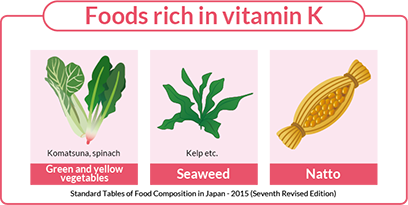Examples of the effects of poor nutrition on health and recommended nutrients
Poor nutrition impacts health in a number of ways
Iron deficiency anemia
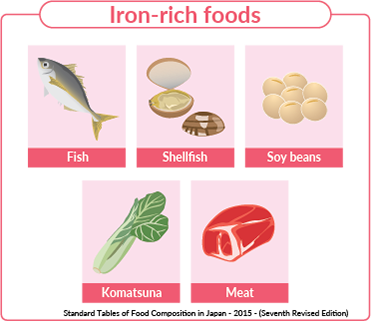
Iron deficiency anemia occurs when there is insufficient iron in the blood. Recently, concerns have been raised over women getting insufficient iron. For example, women aged 18 to 20 who are currently menstruating are recommended to consume 1.5 times more iron than non-menstruating women, and so need to be proactive in getting enough. Other causes of anemia include the increased need for iron during puberty when the body is rapidly growing and the loss of iron due to menstruation.
Therefore, it is a good idea for individuals in these categories to consume foods which contain iron, in addition to vitamins and protein, which help to create new blood and aid in the absorption of iron.
Impact on future generations
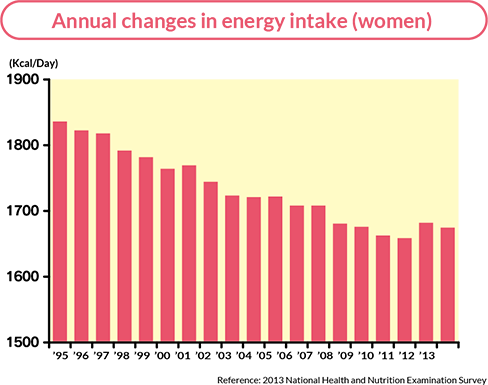
According to the report "Healthy Parents and Children 21 Promotion Council: Eating Habit Guidelines for Pregnant Women, published by the Ministry of Health, Labour and Welfare, women whose body types are classified as "underweight" before becoming pregnant and women who do not properly gain weight during pregnancy are at higher risk for giving birth to low birth weight babies.
Also, according to demographic statistics, the percentage of low birth weight newborns is on an upward trend, growing from 5.1% (1975) to 9.6% (2009) of total newborns. Additionally, the average birth weight is on a downward trend, dropping from 3,200g in 1980 to 3,000g in 2010. Reports point to the possibility of underweight body types before pregnancy and the attempts of many pregnant mothers to suppress weight gain during pregnancy as some possible reasons behind these trends. There are also survey results which show that low birth weight babies are at higher risk of diabetes mellitus, hypertension, and other lifestyle diseases after becoming adults.
Furthermore, sudden loss of weight due to dieting can reduce overall body fat percentage. Body weight percentage and ovarian function are intimately related, and a reduction in body fat percentage can suppress the function of the pituitary gland in the brain, leading to menstrual irregularities, amenorrhea, and other ovarian dysfunction. As the restoration of ovarian function can be quite difficult after cases of severe amenorrhea, it is essential that women exercise caution when considering extreme diets.
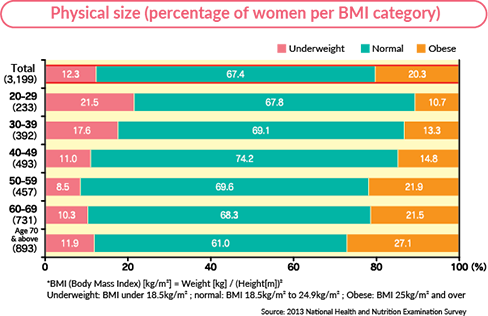
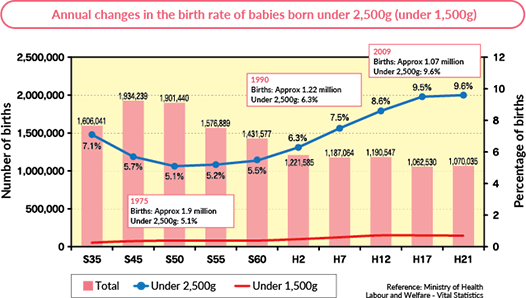
Loss of bone mass in youth
Osteoporosis is a condition where bones become brittle due to a severe loss of bone mass. While many women in their 20s may not associate themselves with this disease, it is said that the bone mass of both men and women is at its peak in the 20s and 30s. In other words, bones are formed up until that age, and then from that point onwards slowly deteriorate. Women, in general, have a lower bone mass than men, and because the decrease in the female hormone estrogen in postmenopausal women can lead to accelerated bone loss, these individuals must be especially careful. The average calcium intake for women age 18 to 20 is 405mg; this is 25% short of the recommended amount for that age range, 650mg*. Ensuring a proper intake of calcium to help increase bone mass when young is one preventative measure to help protect against osteoporosis. Consuming both vitamin D, which helps with calcium absorption, and vitamin K, which aids in bone formation, is also advisable.
- *National Health and Nutrition Survey (2013) / Overview of Dietary Reference Intakes for Japanese (2015)
Food groups rich in calcium
Calcium is an essential nutrient for the formation of bones and teeth.
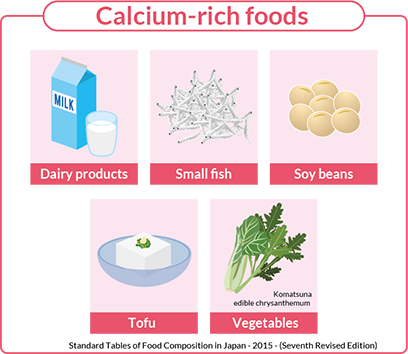
Food groups rich in vitamin D
Vitamin D is a nutrient which promotes calcium absorption in the digestive tract and aids in the formation of bones.
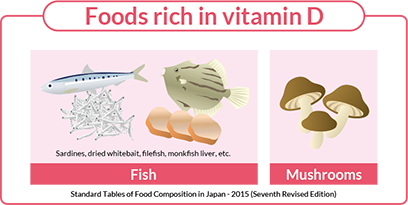
Food groups rich in vitamin K
Vitamin K is a nutrient which aids in the formation of calcium.
